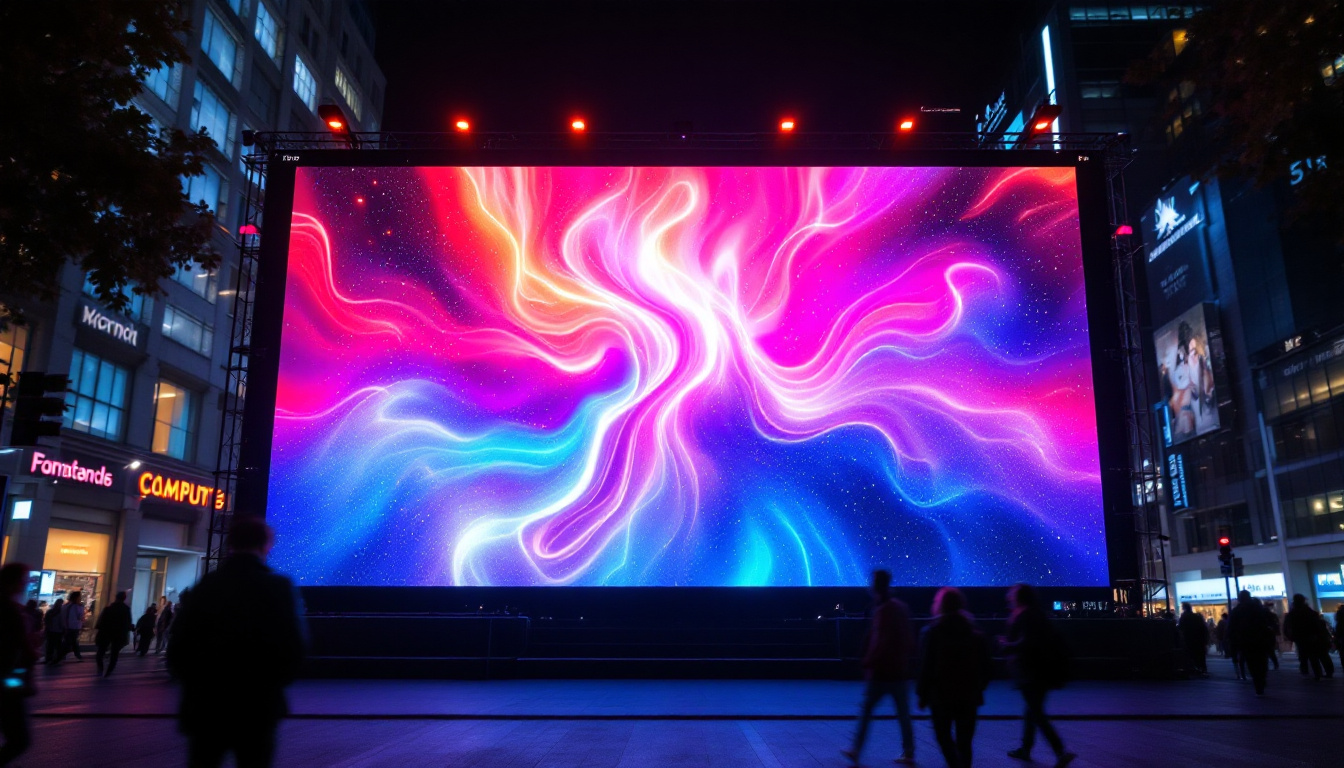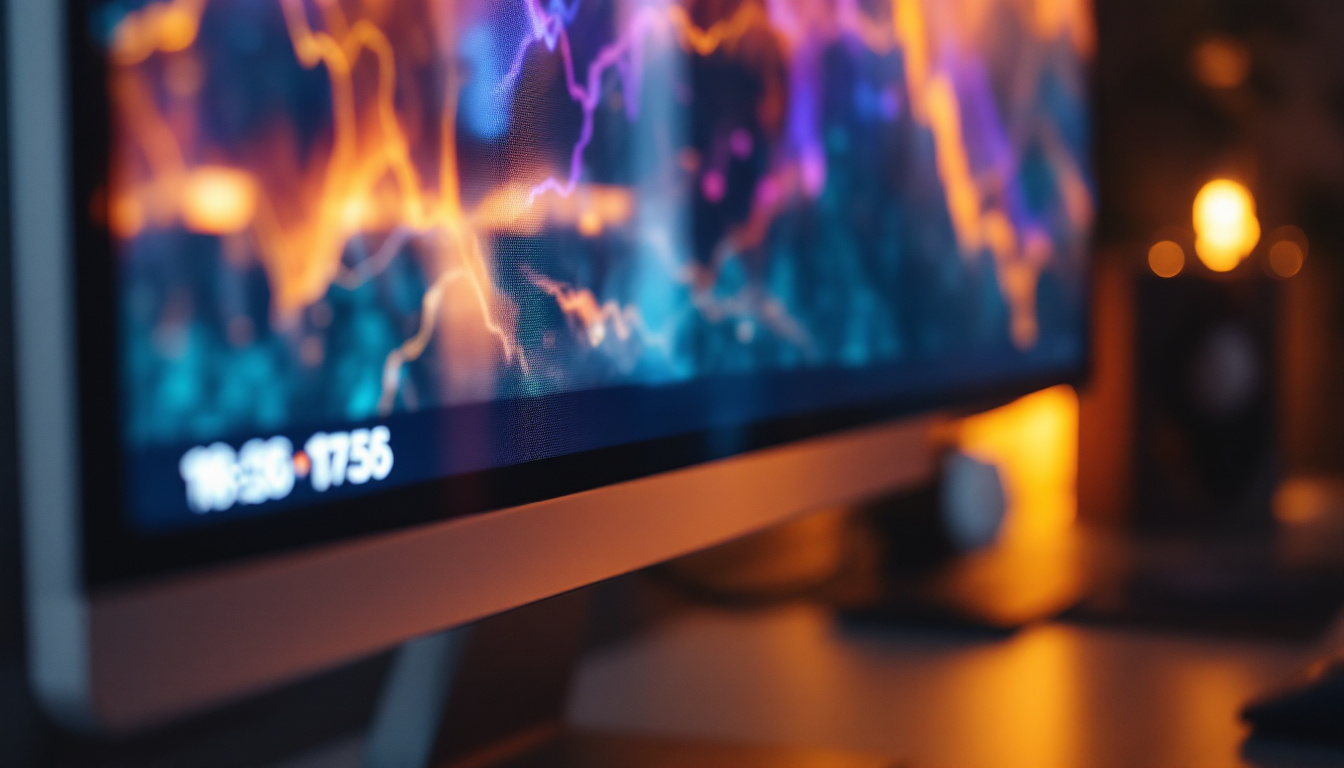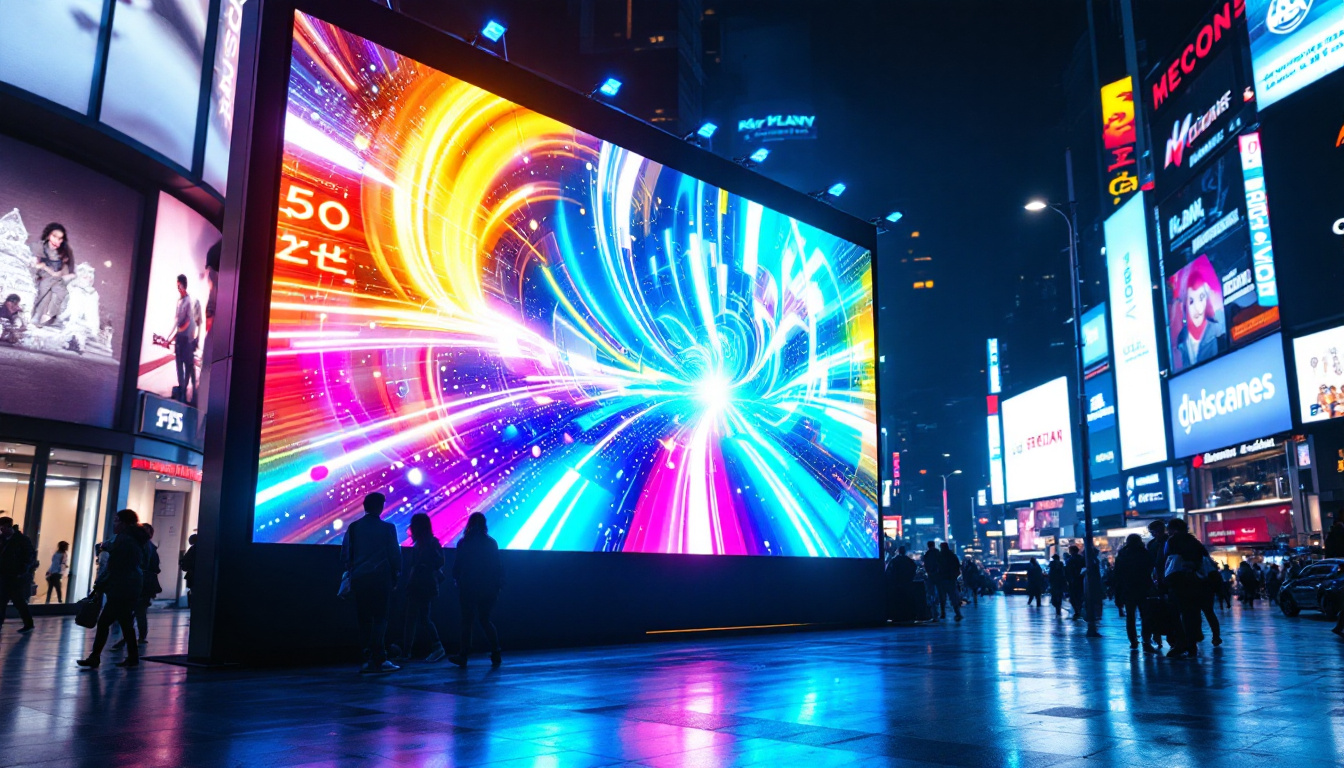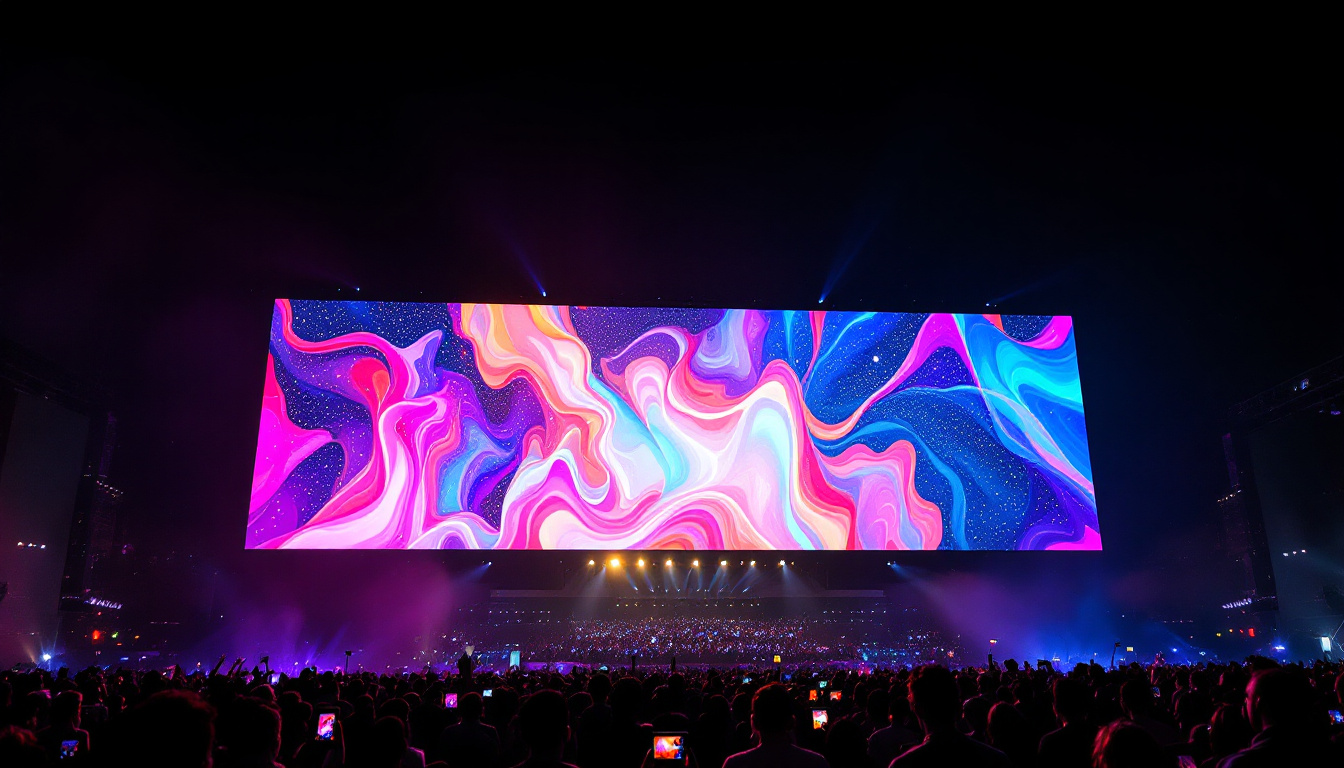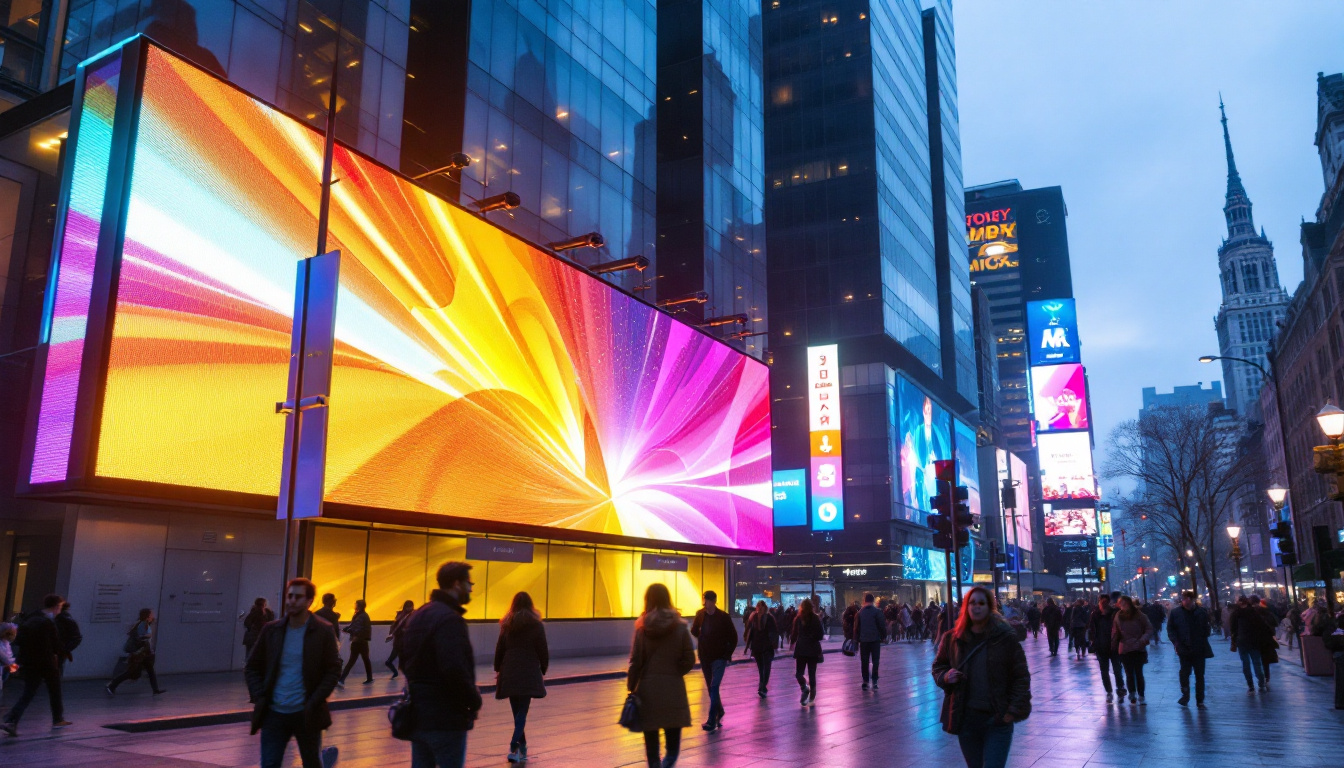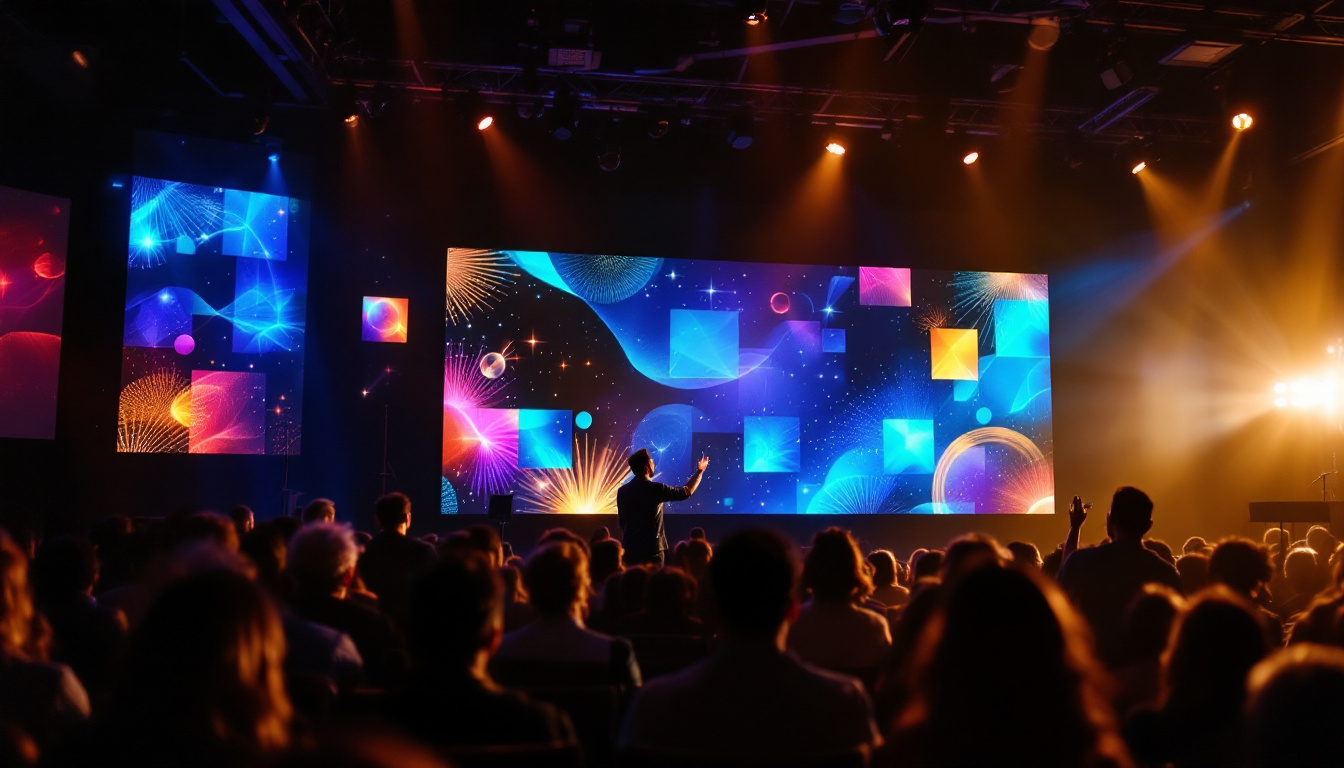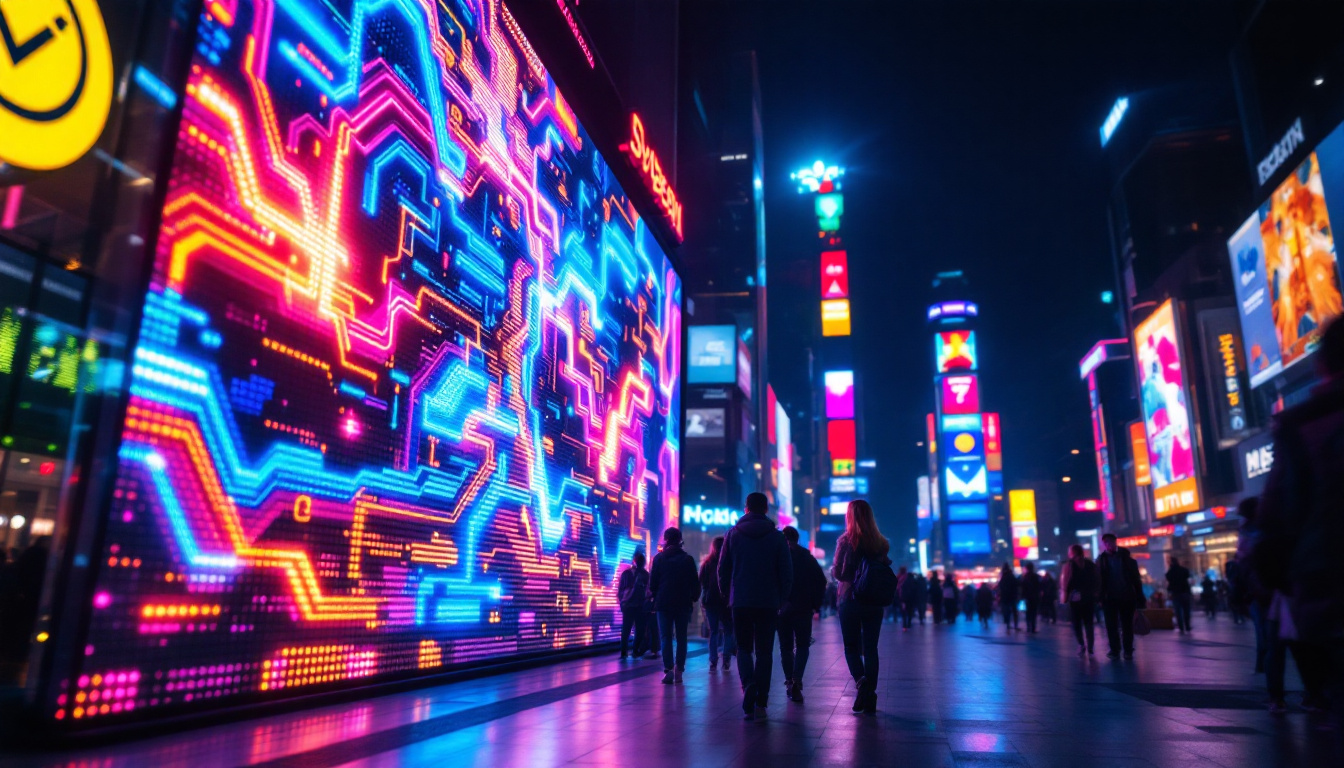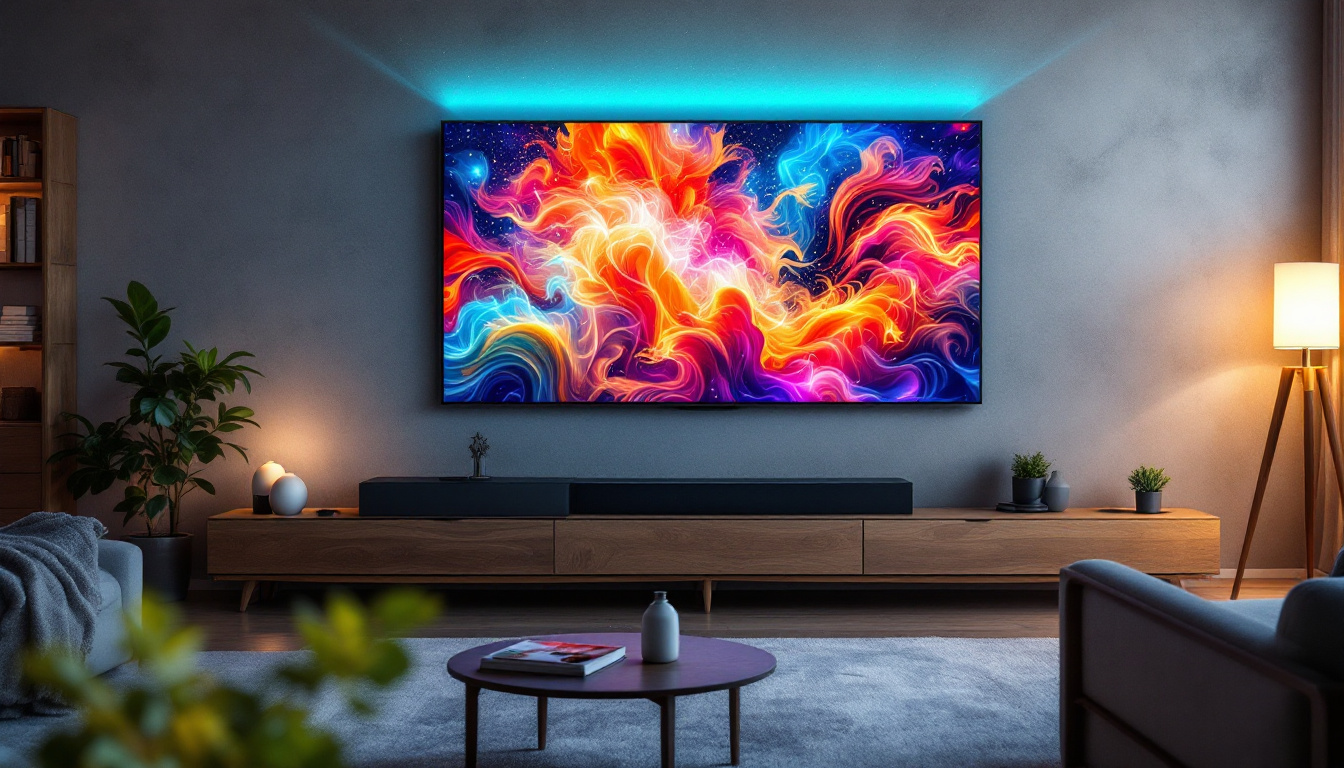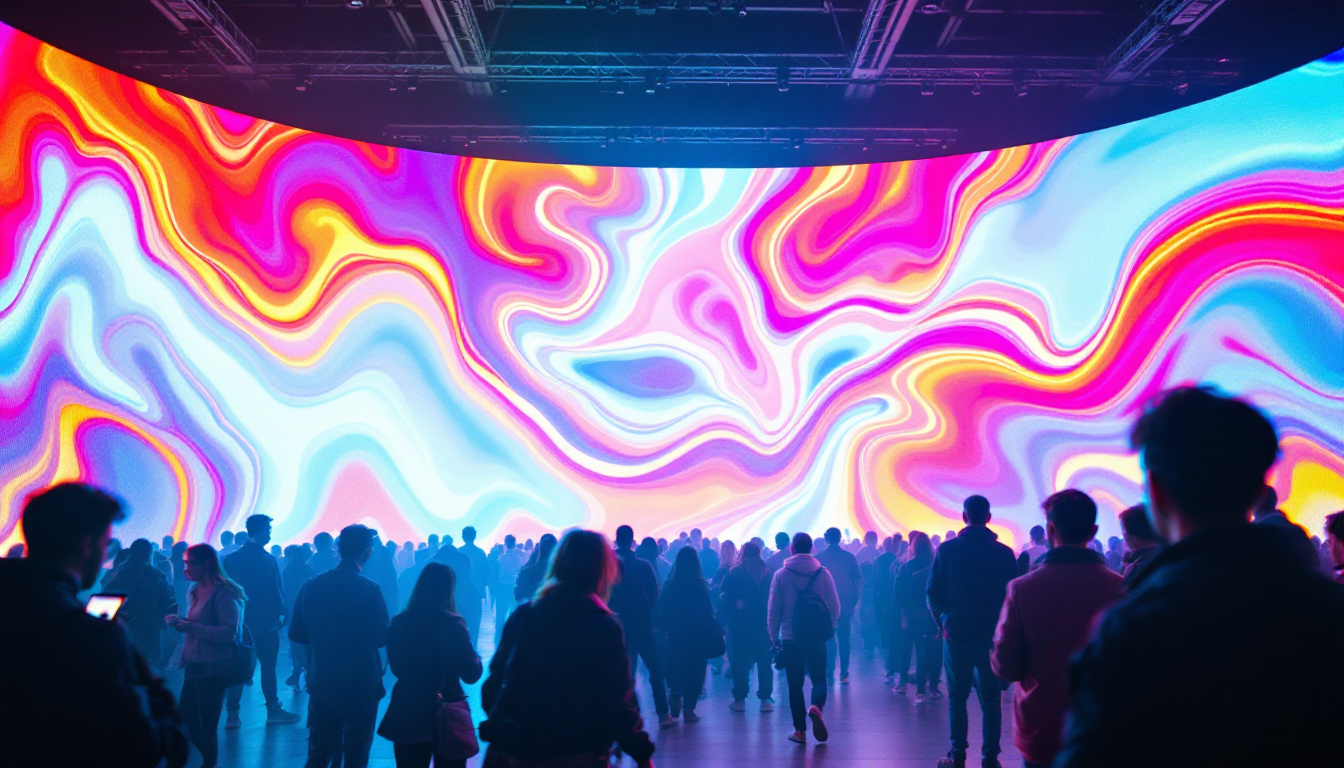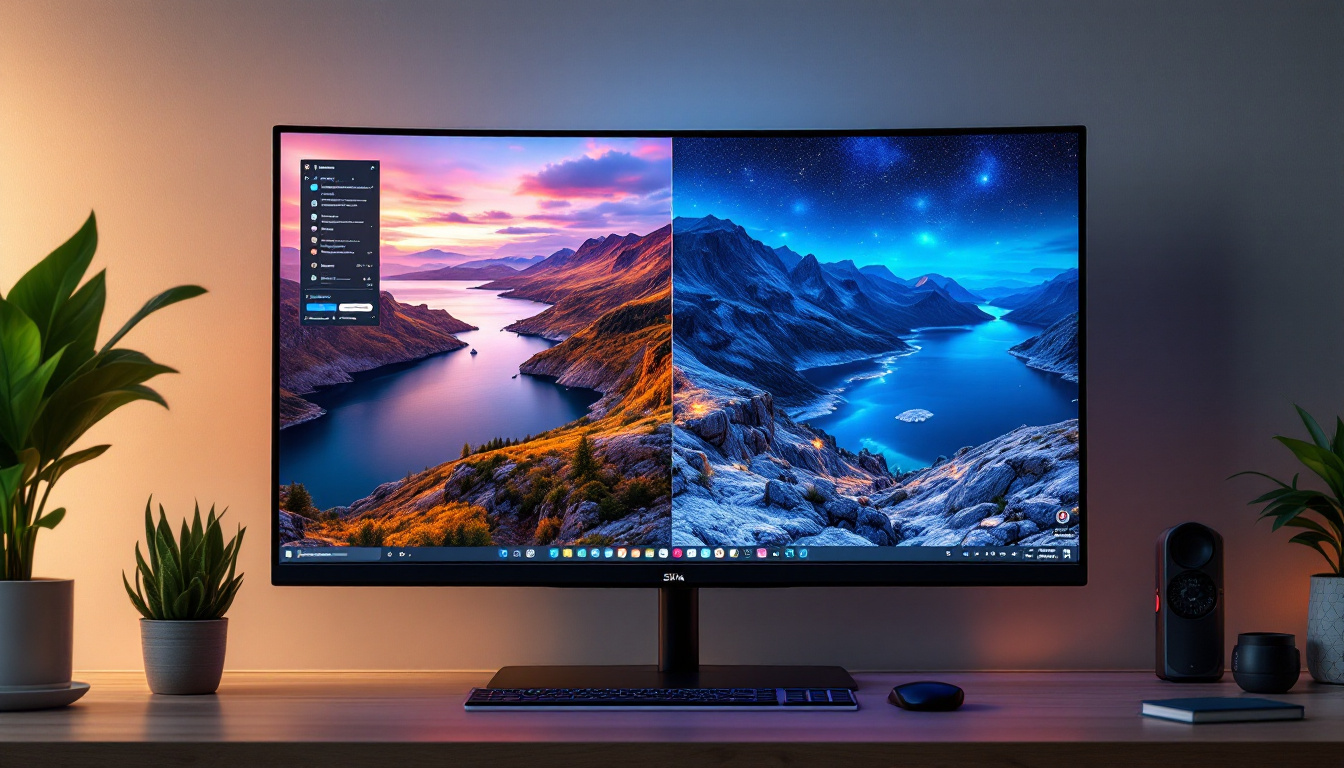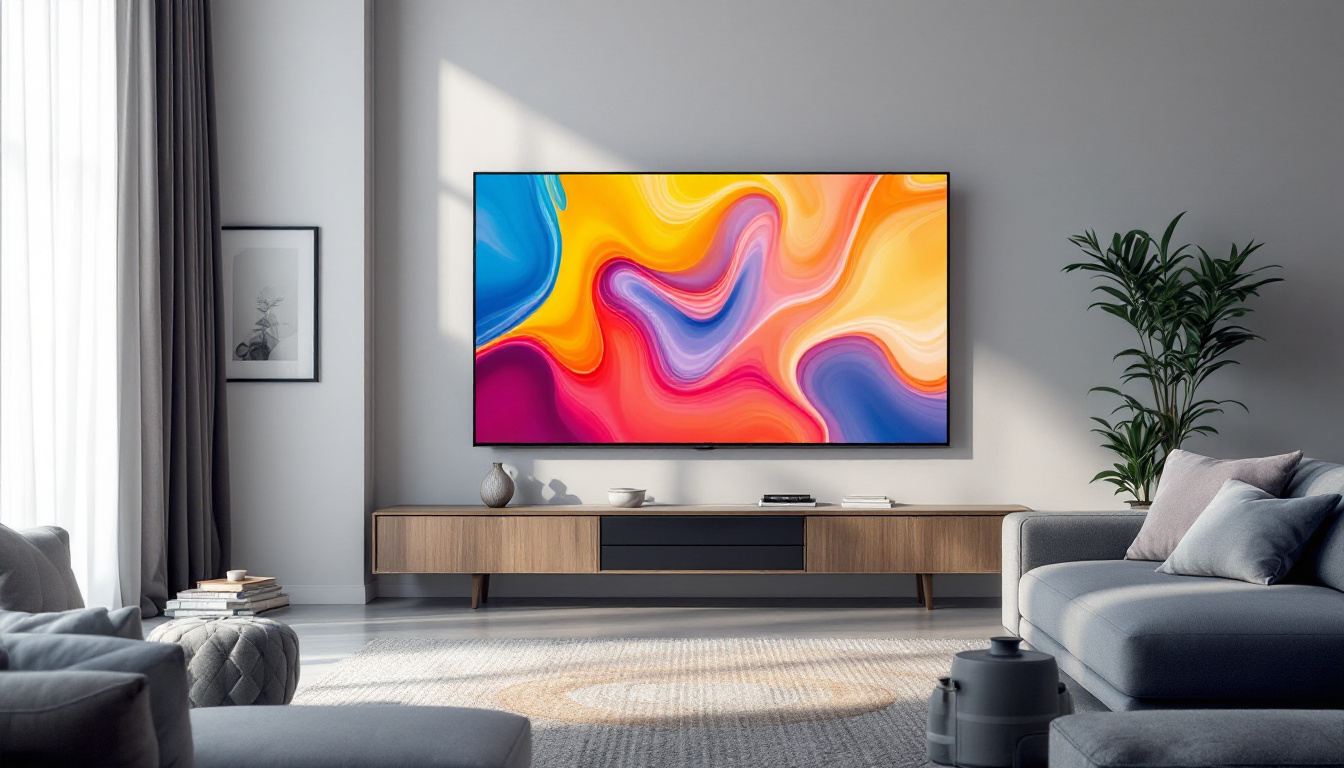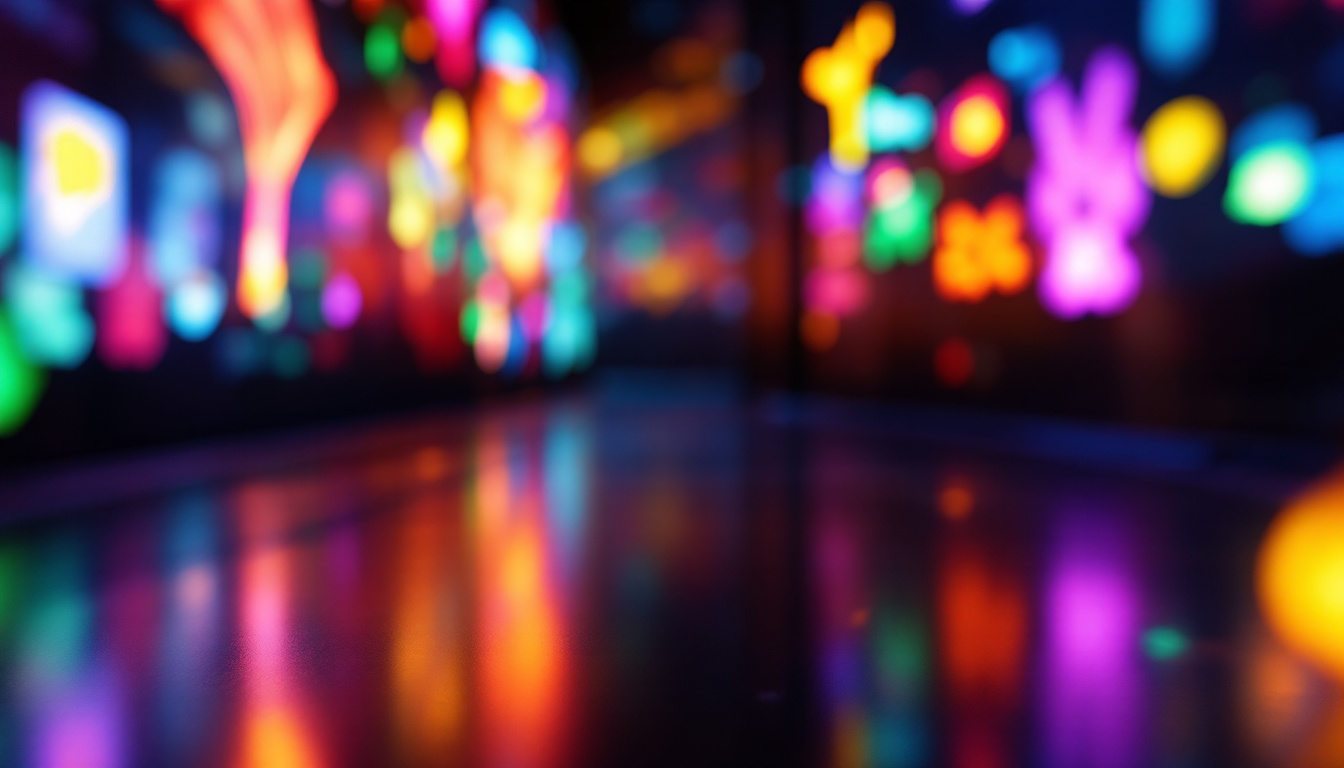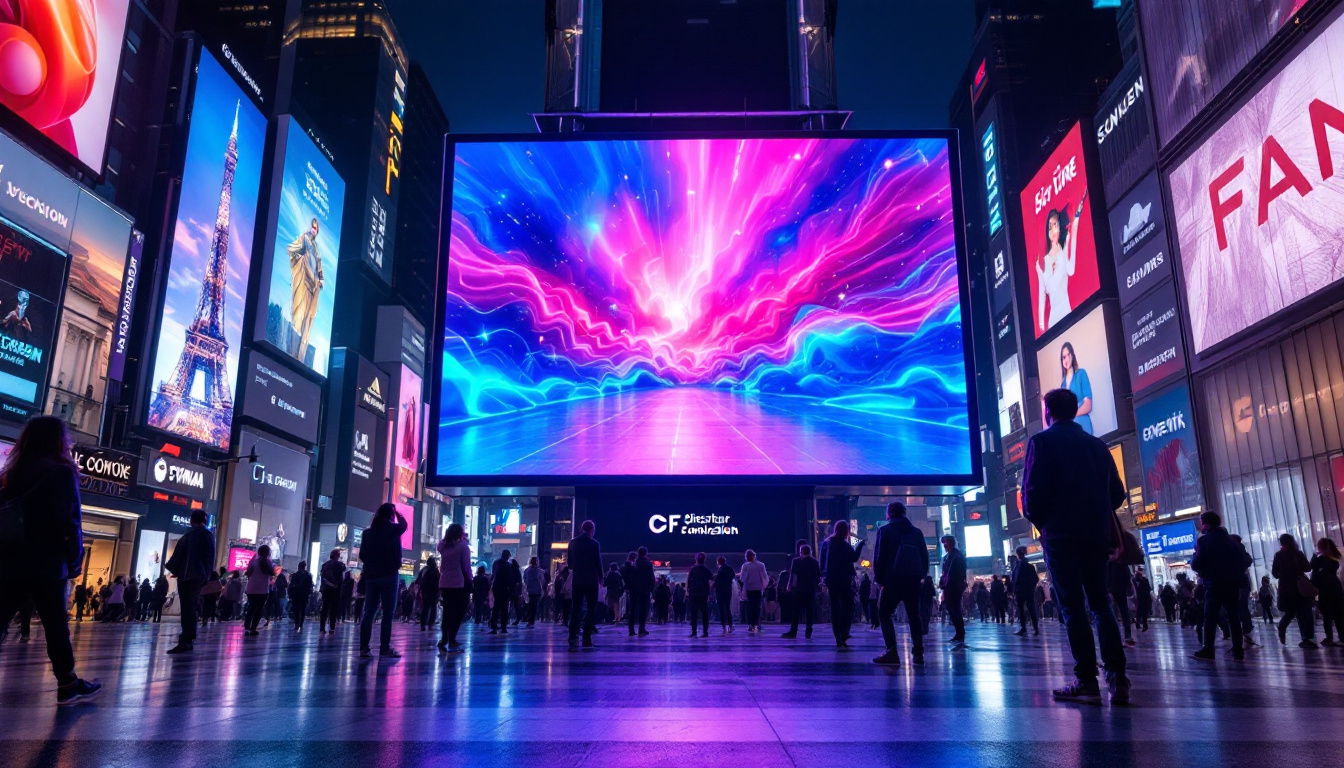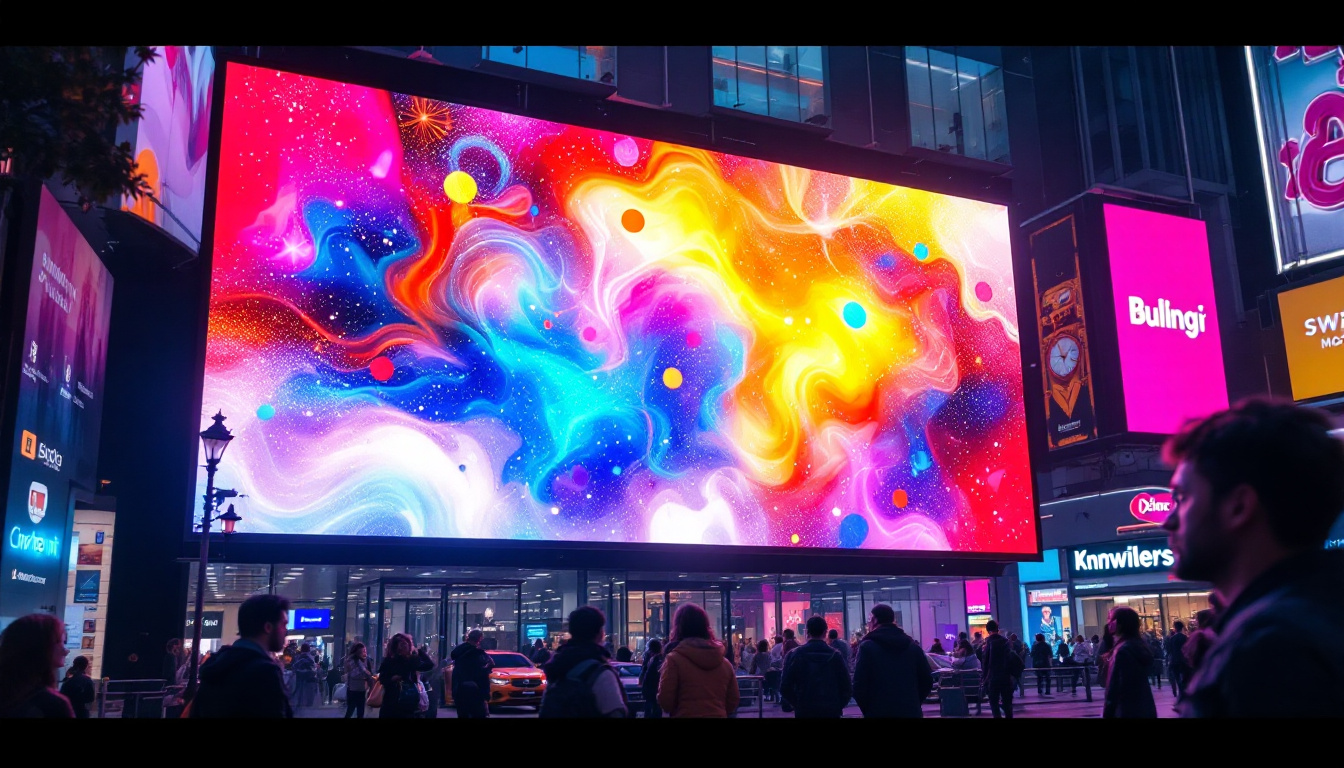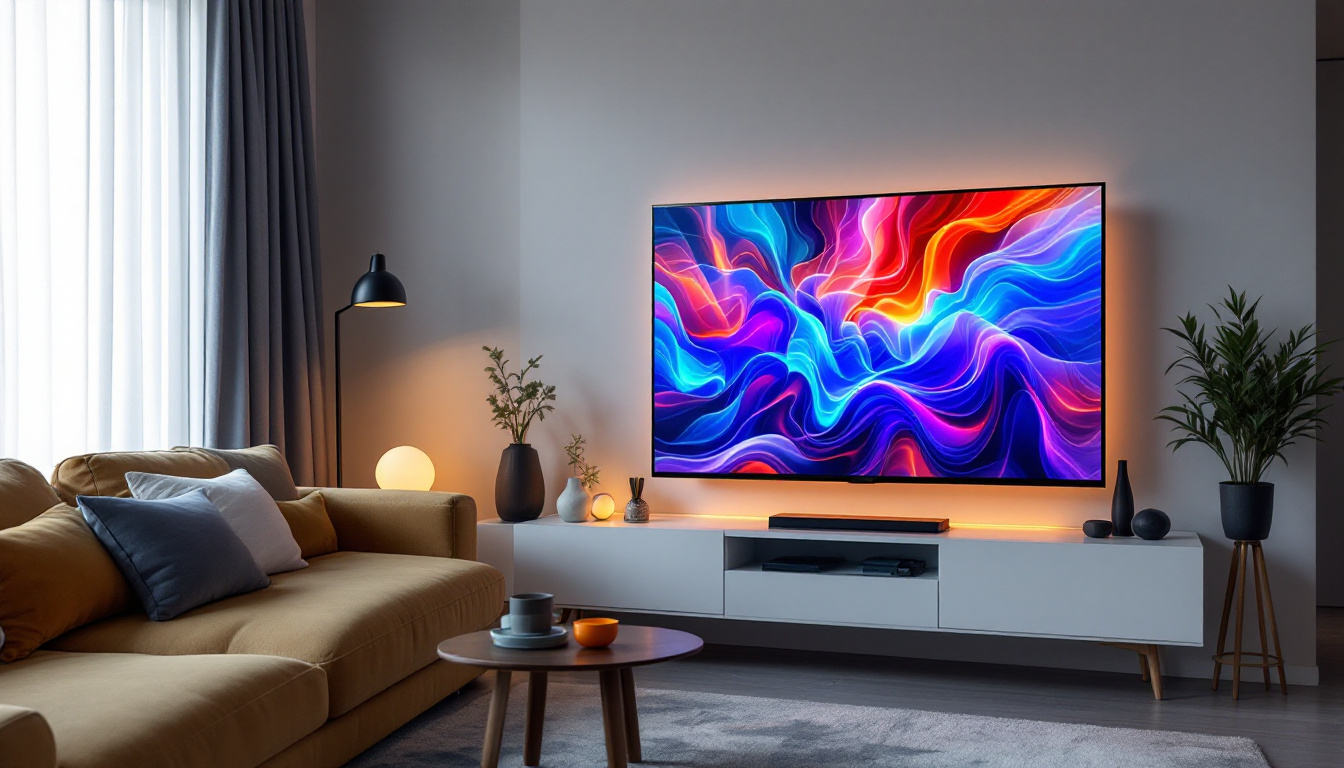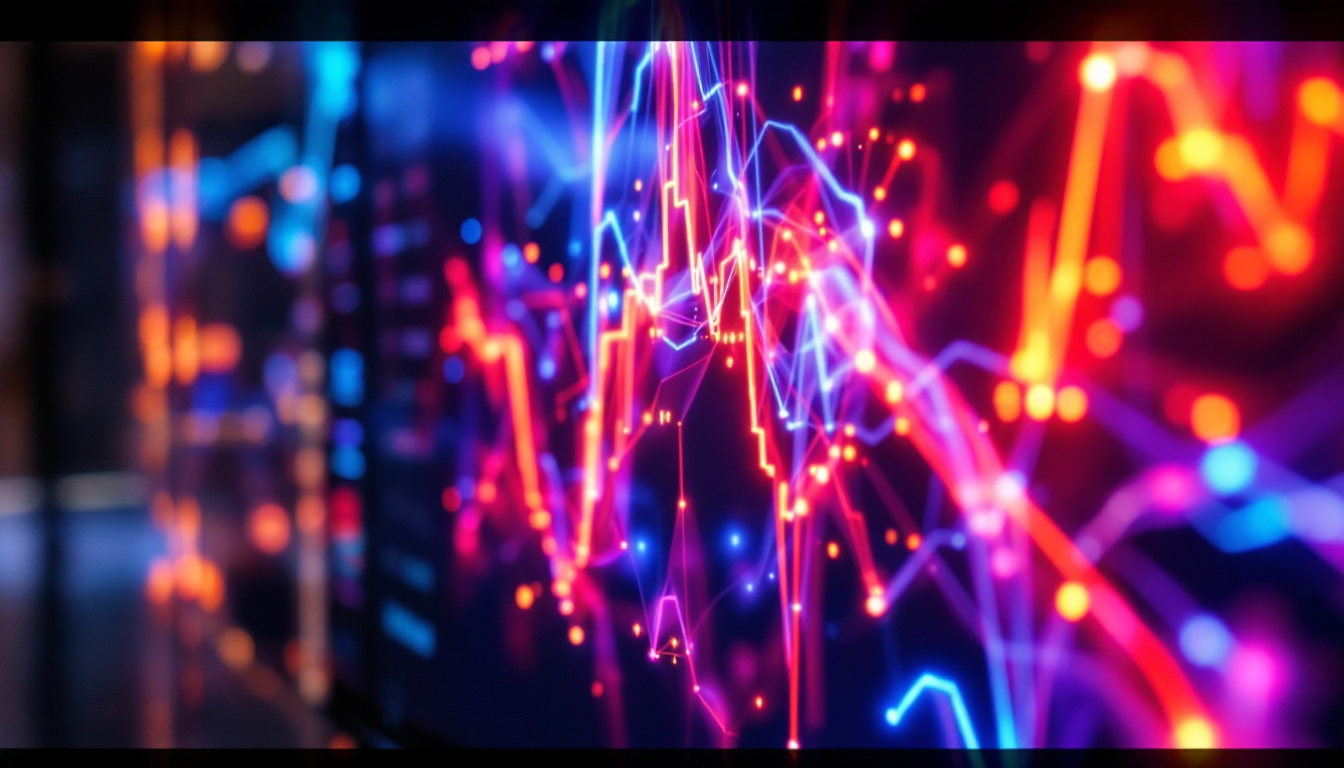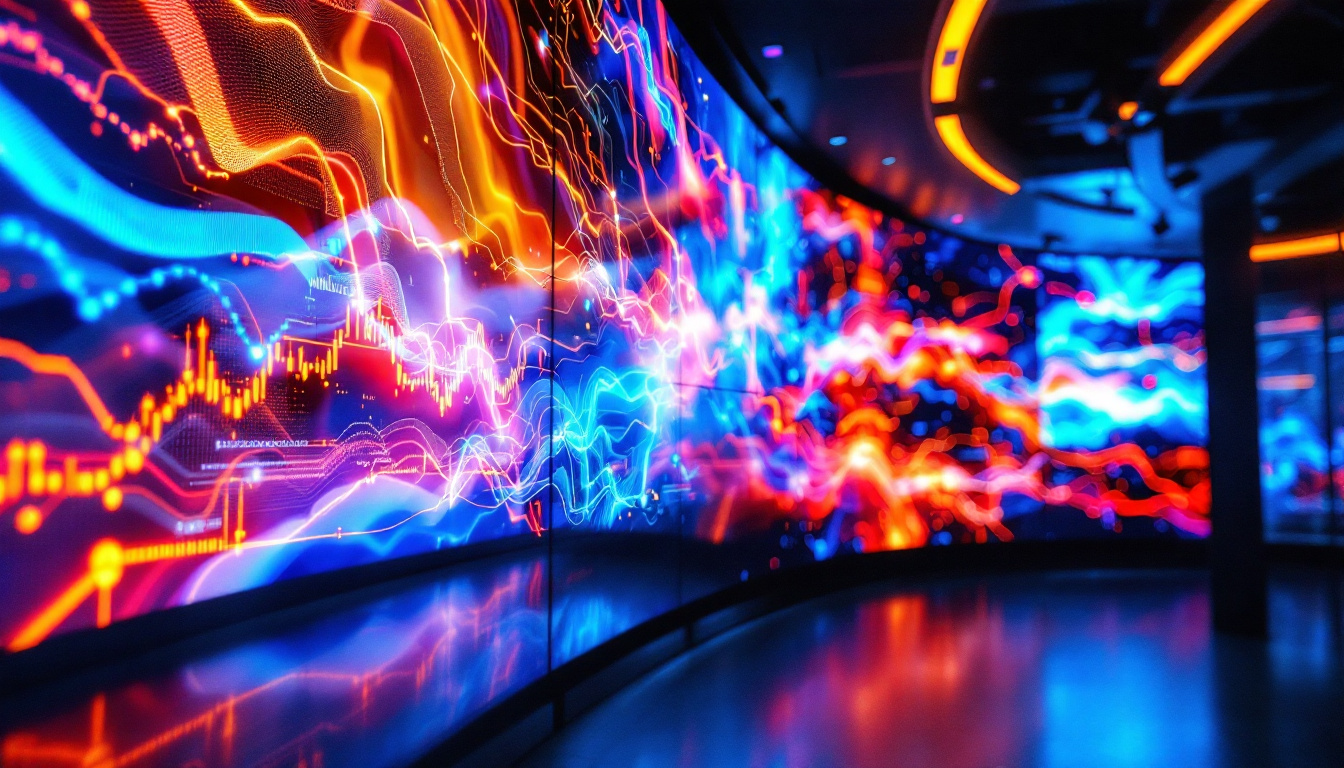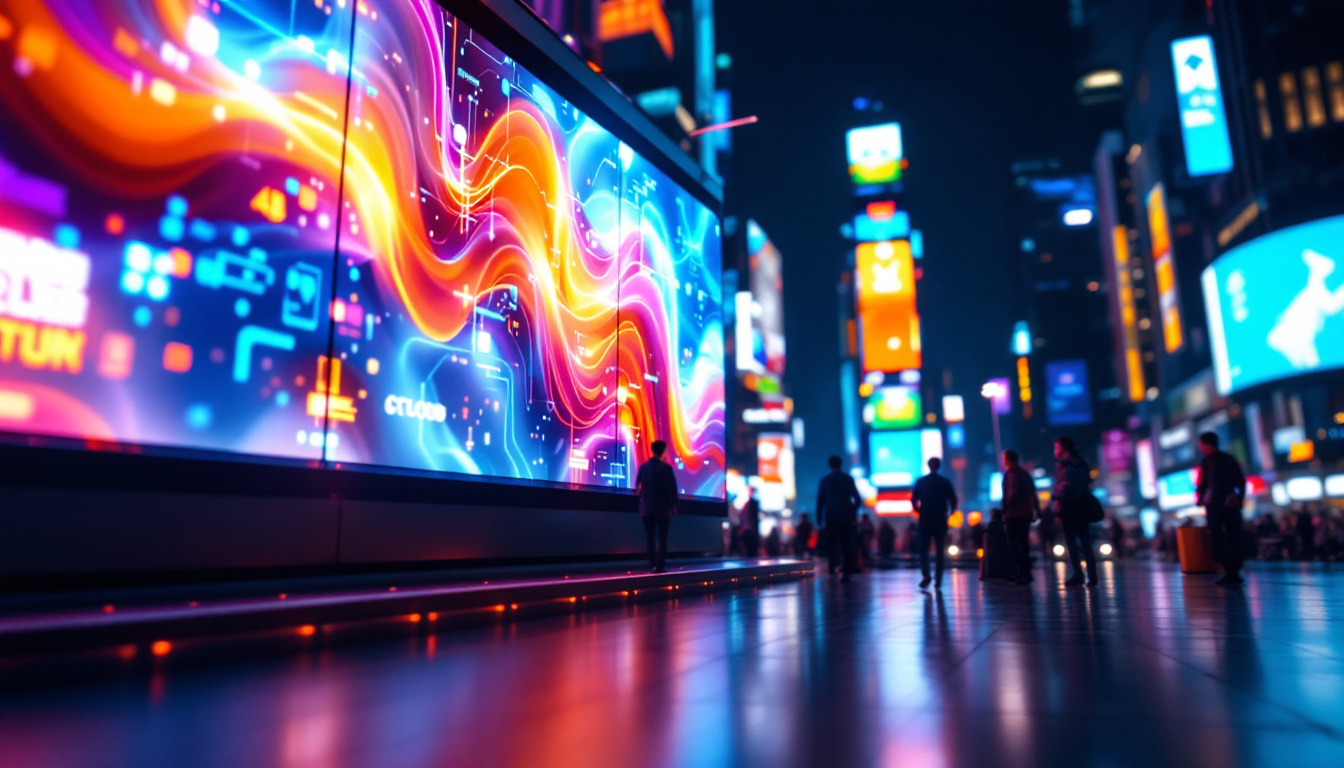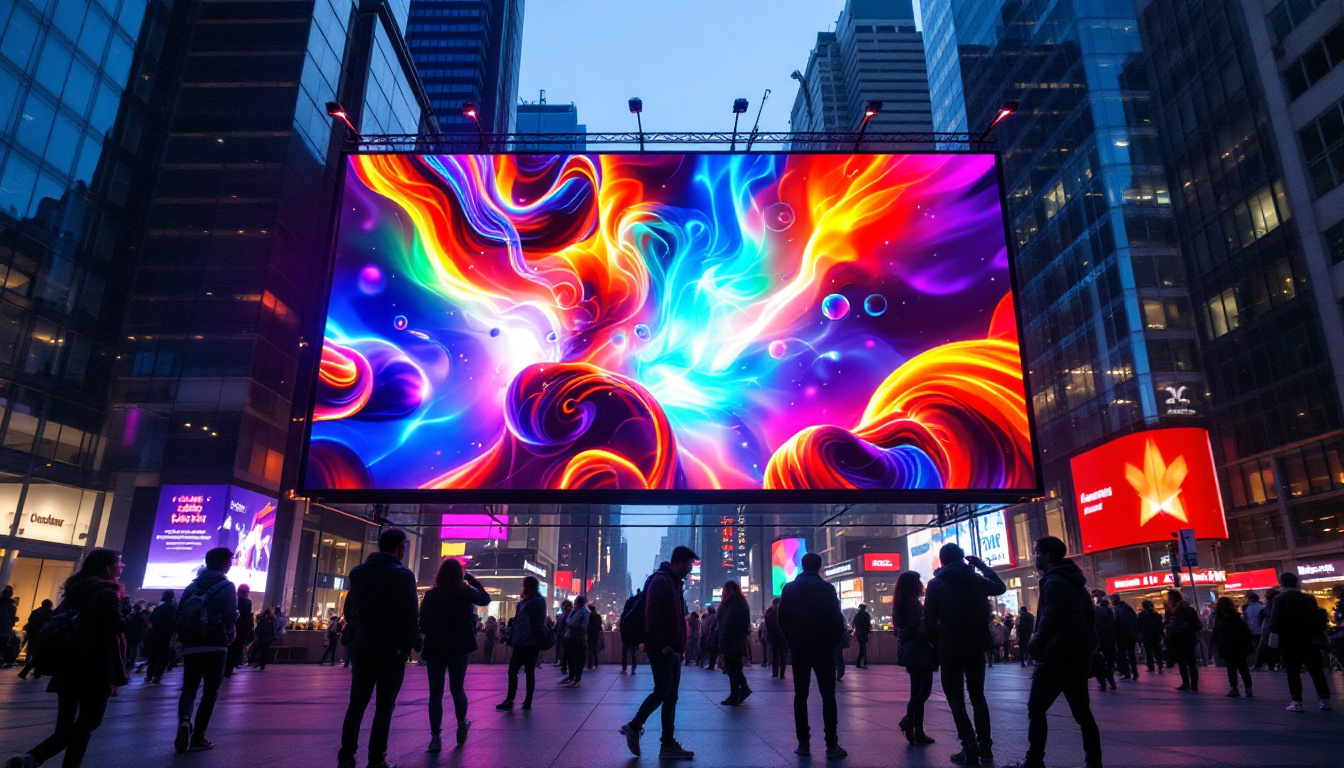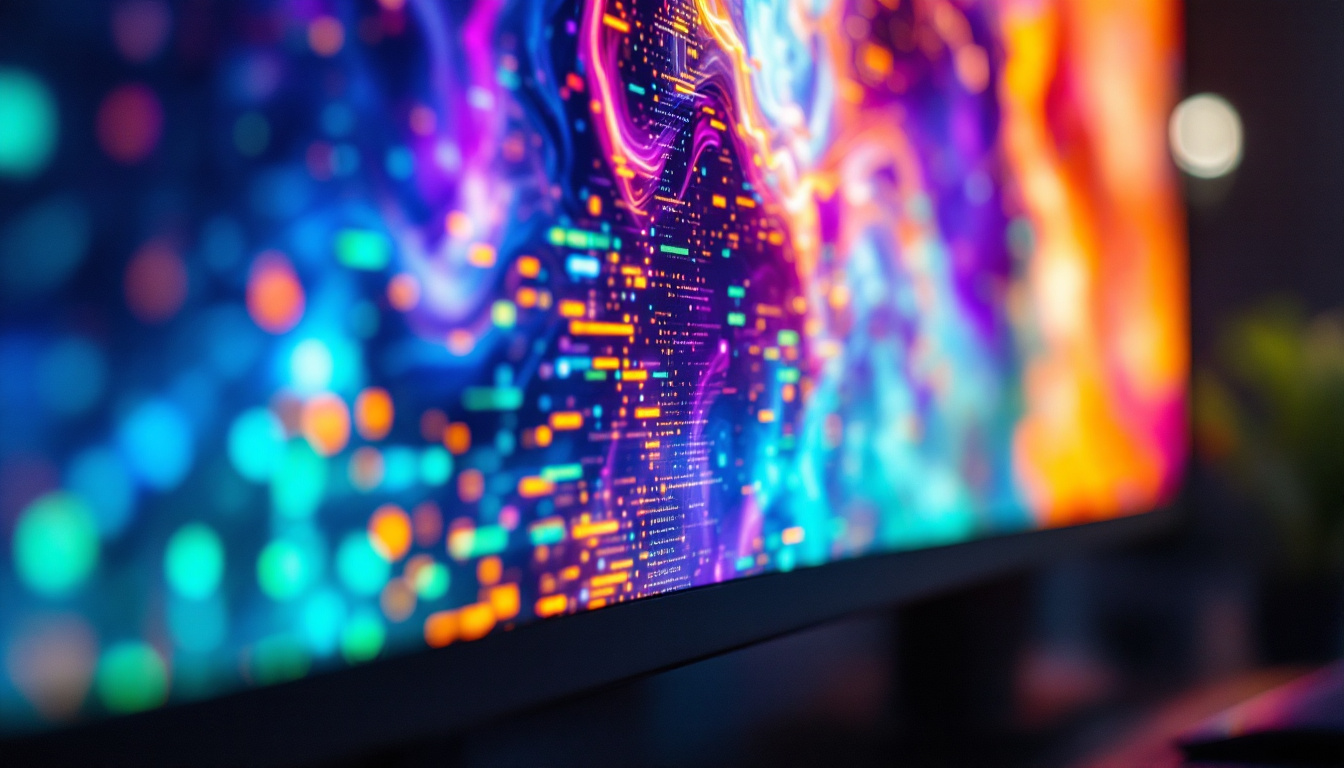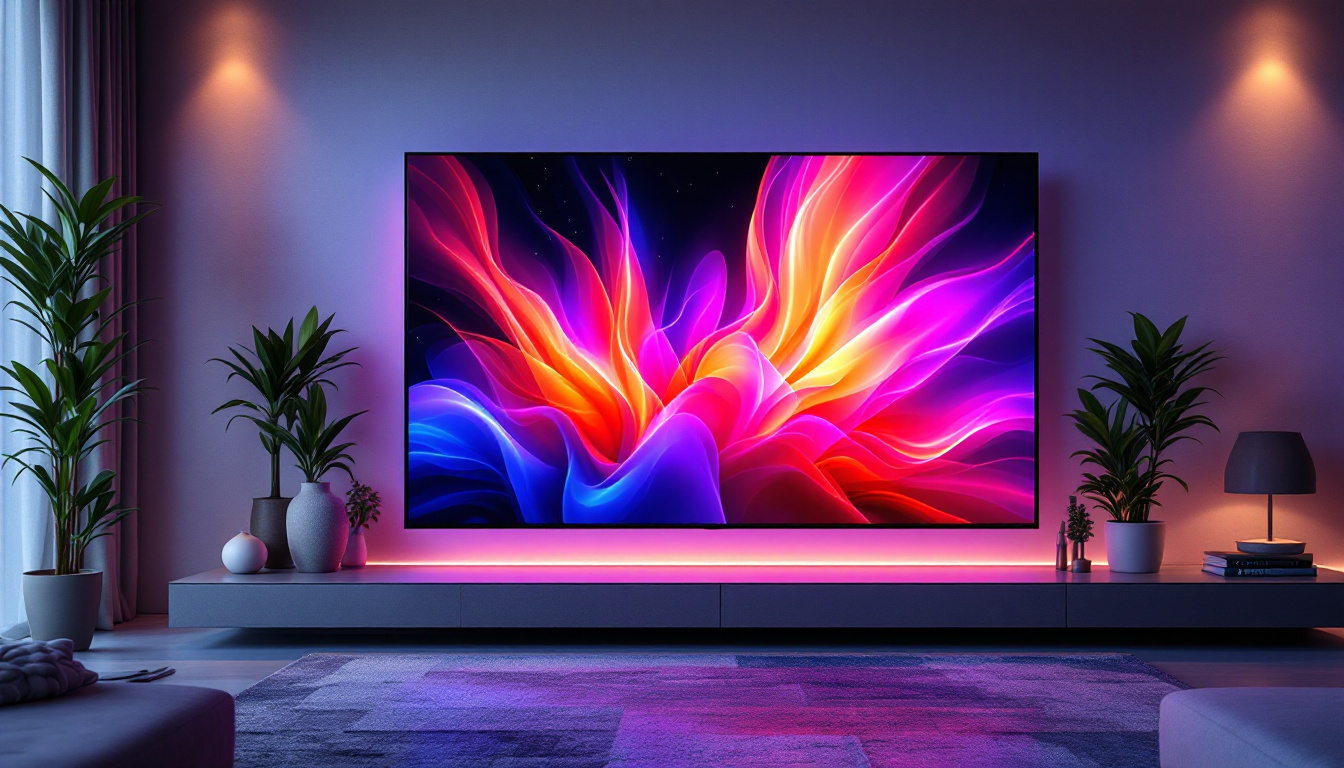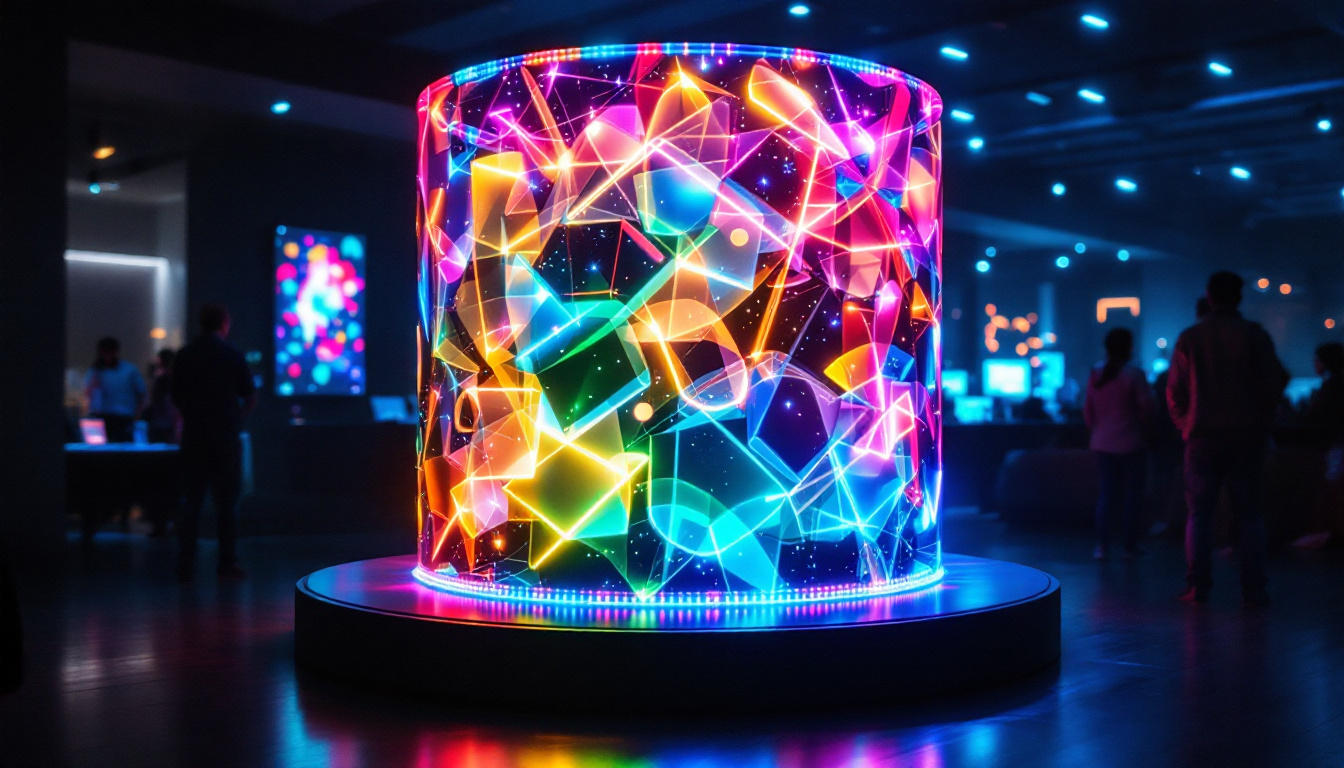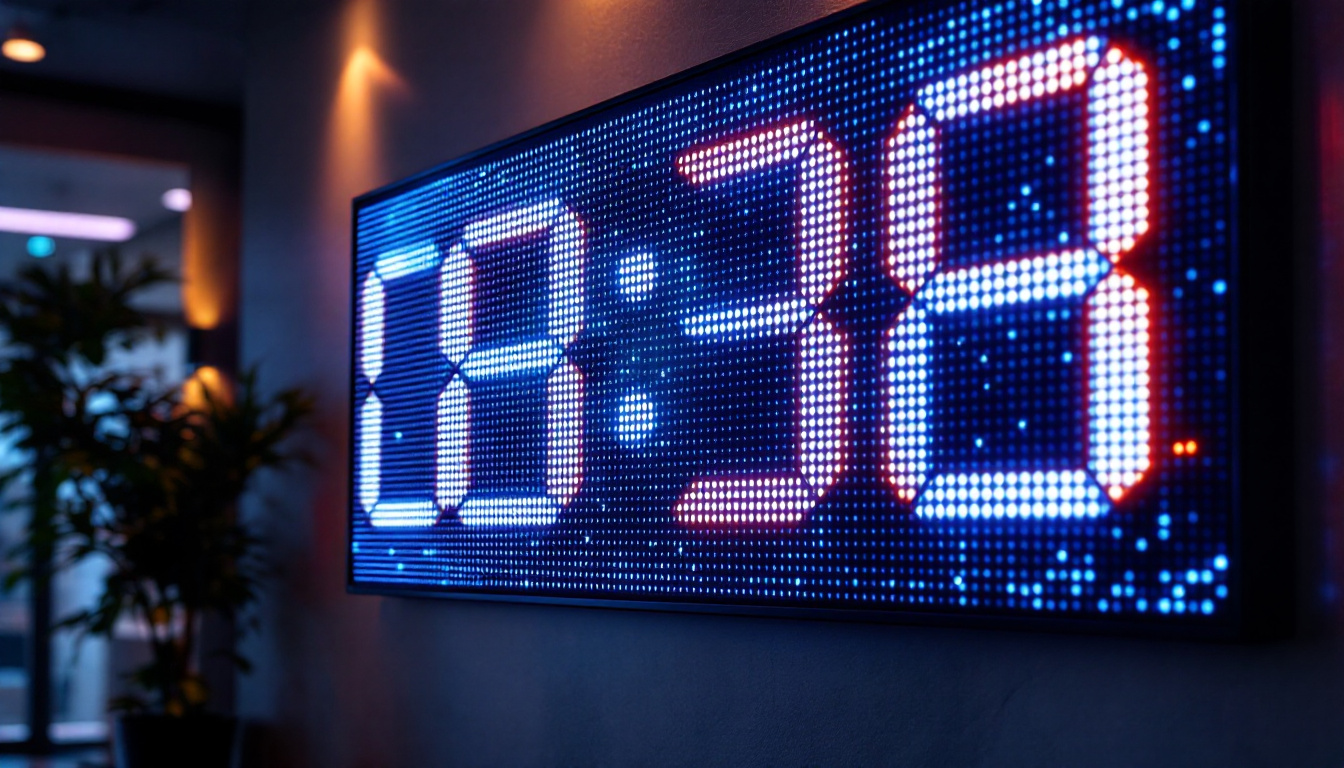In recent years, LED displays have become ubiquitous in various sectors, ranging from advertising to consumer electronics. Their versatility, energy efficiency, and superior image quality have made them the preferred choice for many applications. This article delves into the intricacies of LED displays, exploring their technology, applications, advantages, and future trends.
Understanding LED Technology
LED, or Light Emitting Diode, is a semiconductor device that emits light when an electric current passes through it. The basic principle behind an LED display involves the combination of multiple LEDs to create images and videos. This technology has evolved significantly, leading to various types of LED displays that cater to different needs. The versatility of LED technology has not only transformed the way we experience visual content but has also paved the way for innovative applications across various industries, from entertainment to healthcare.
How LED Displays Work
At the core of an LED display are tiny diodes that emit light in different colors. By combining red, green, and blue (RGB) LEDs, a full spectrum of colors can be produced. These diodes are arranged in a grid, where each pixel consists of multiple RGB components. When these components are activated in various combinations, they create the desired image or video content. The precision in controlling these colors is what allows for stunning visuals, with the ability to display vibrant images and smooth transitions that enhance viewer engagement.
The display is controlled by a driver circuit that manages the intensity of each LED, allowing for dynamic content to be displayed. This technology enables high refresh rates and a wide range of brightness levels, making LED displays suitable for both indoor and outdoor environments. Additionally, advancements in LED technology have led to improvements in energy efficiency, reducing power consumption while maintaining high-quality output. This is particularly beneficial in large installations, where energy savings can be substantial over time.
Types of LED Displays
There are several types of LED displays, each designed for specific applications. The most common types include:
- Direct View LED Displays: These displays are made up of individual LEDs that are visible from a distance. They are often used for large outdoor billboards and signage, providing bright and eye-catching advertisements that can be seen even in direct sunlight.
- LED Backlit Displays: In this type, LEDs are used as a backlight for LCD panels. This combination enhances brightness and color accuracy, making it popular for televisions and computer monitors. The use of LED backlighting has allowed manufacturers to create thinner and lighter screens without sacrificing performance.
- Organic LED (OLED) Displays: OLED technology uses organic compounds to emit light. This allows for thinner displays and better contrast ratios, making them ideal for smartphones and high-end televisions. OLEDs also offer the advantage of flexible screens, opening new possibilities for innovative designs in consumer electronics.
Moreover, there are specialized LED displays such as Transparent LED Displays, which allow for a see-through effect, making them perfect for retail environments where product visibility is crucial. Another emerging type is MicroLED technology, which uses microscopic LEDs to create displays with incredible resolution and brightness, suitable for applications in augmented reality and virtual reality. As the demand for high-quality visual experiences continues to grow, the evolution of LED technology is likely to lead to even more exciting developments in the future.
Applications of LED Displays
The versatility of LED displays has led to their adoption across various industries. From advertising to entertainment, the applications are vast and varied.
Advertising and Marketing
One of the most prominent applications of LED displays is in advertising. Billboards and digital signage utilize LED technology to capture the attention of passersby. The ability to change content dynamically allows advertisers to target specific audiences and promote various products or services in real-time.
Moreover, the brightness and visibility of LED displays make them effective even in direct sunlight, ensuring that advertisements are seen at all times of the day. This adaptability has revolutionized the marketing landscape, providing businesses with a powerful tool for engagement.
Entertainment and Events
LED displays are a staple in the entertainment industry, particularly in concerts, sports events, and festivals. Large-scale LED screens are used to enhance the audience experience by displaying live feeds, graphics, and animations. The high resolution and vibrant colors contribute to an immersive environment, making events more engaging.
Furthermore, LED technology allows for creative stage designs, where displays can be integrated into the set itself. This flexibility in design opens up new possibilities for artists and event organizers, enabling them to create unique visual experiences.
Consumer Electronics
In the realm of consumer electronics, LED displays are prevalent in televisions, smartphones, and computer monitors. The advancements in LED technology have led to thinner, lighter, and more energy-efficient devices. Consumers benefit from improved picture quality, with deeper blacks and brighter colors, enhancing their viewing experience.
Additionally, the rise of smart TVs has seen LED displays integrated with advanced technologies such as 4K resolution and HDR (High Dynamic Range), further elevating the standards of home entertainment.
Advantages of LED Displays
LED displays offer numerous advantages that contribute to their widespread adoption. Understanding these benefits can help in making informed decisions when considering display technology.
Energy Efficiency
One of the most significant advantages of LED displays is their energy efficiency. Compared to traditional display technologies, such as LCD and CRT, LEDs consume significantly less power. This not only reduces operational costs but also contributes to environmental sustainability.
Furthermore, the long lifespan of LED displays, often exceeding 50,000 hours, means less frequent replacements, resulting in lower waste and resource consumption over time.
High Brightness and Contrast
LED displays are known for their high brightness levels, making them suitable for various lighting conditions. This feature is particularly beneficial for outdoor applications where sunlight can wash out other types of displays. The ability to maintain clarity and vibrancy in bright environments is a key selling point for LED technology.
In addition to brightness, LED displays offer superior contrast ratios, allowing for deeper blacks and more vibrant colors. This enhances the overall viewing experience, making images and videos more lifelike and engaging.
Flexibility and Scalability
Another notable advantage of LED displays is their flexibility in design and scalability. They can be manufactured in various shapes and sizes, allowing for creative installations tailored to specific environments. Whether it’s a massive outdoor billboard or a small indoor screen, LED technology can be adapted to meet diverse requirements.
This scalability also extends to modular designs, where multiple LED panels can be combined to create larger displays. This feature is particularly useful for events and exhibitions, where temporary installations may be needed.
Challenges and Considerations
Despite their many advantages, LED displays are not without challenges. Understanding these limitations is essential for making informed decisions regarding their use.
Initial Cost
The initial investment for LED displays can be higher than traditional display technologies. While the long-term savings in energy consumption and maintenance costs can offset this, the upfront expense may deter some businesses from making the switch.
However, as technology advances and production processes improve, the costs associated with LED displays are gradually decreasing, making them more accessible to a wider range of consumers and businesses.
Color Accuracy and Calibration
Color accuracy is another consideration when it comes to LED displays. While they offer vibrant colors, achieving precise color reproduction can be challenging. Factors such as the quality of the LEDs, the calibration of the display, and the viewing angle can all influence color accuracy.
Regular calibration and maintenance are necessary to ensure that LED displays perform optimally, especially in professional environments where color fidelity is crucial, such as in photography or graphic design.
Environmental Impact
While LED displays are more energy-efficient than their predecessors, they still have an environmental impact. The production and disposal of electronic components can contribute to electronic waste, which is a growing concern globally. It is essential for manufacturers and consumers to consider sustainable practices, such as recycling and responsible disposal methods.
The Future of LED Displays
The future of LED display technology looks promising, with ongoing advancements and innovations set to shape the industry. Emerging trends indicate a shift towards even more efficient and versatile displays.
MicroLED Technology
MicroLED technology is one of the most exciting developments in the LED display landscape. Unlike traditional LEDs, MicroLEDs are much smaller, allowing for higher pixel densities and improved image quality. This technology promises to deliver even better contrast, brightness, and color accuracy, making it ideal for high-end applications.
Furthermore, MicroLED displays can be made flexible and transparent, opening up new possibilities for creative installations in architecture and design.
Integration with Smart Technologies
As the world becomes increasingly connected, the integration of LED displays with smart technologies is on the rise. Displays that can connect to the Internet of Things (IoT) will enable real-time data sharing and interactive experiences. This trend is particularly relevant in advertising, where displays can adapt content based on audience behavior and preferences.
Smart LED displays will also enhance user experiences in retail environments, allowing for personalized marketing and improved customer engagement.
Advancements in Sustainability
With growing awareness of environmental issues, the LED display industry is focusing on sustainability. Manufacturers are exploring eco-friendly materials and production processes to minimize environmental impact. Additionally, initiatives for recycling and responsible disposal of electronic components are gaining traction.
As sustainability becomes a priority, consumers can expect to see more environmentally friendly options in the LED display market, contributing to a greener future.
Conclusion
LED displays have revolutionized the way information is presented and consumed across various industries. Their energy efficiency, high brightness, and versatility make them an attractive option for businesses and consumers alike. While challenges exist, ongoing advancements in technology are paving the way for a brighter future in display solutions.
As the industry continues to evolve, staying informed about the latest trends and innovations will be crucial for leveraging the full potential of LED displays. Whether for advertising, entertainment, or consumer electronics, LED technology is set to remain at the forefront of visual communication for years to come.
Explore Cutting-Edge LED Display Solutions
Ready to elevate your visual experience with the latest in LED technology? Discover LumenMatrix’s innovative range of LED display solutions, designed to bring your brand to life and captivate your audience. From dynamic Indoor and Outdoor LED Wall Displays to versatile Vehicle and Sports LED Displays, and even Custom and All-in-One solutions, LumenMatrix has the perfect LED display to meet your needs. Experience the future of visual communication today and check out LumenMatrix LED Display Solutions to see how we can enhance your engagement and clarity in delivering your message.

